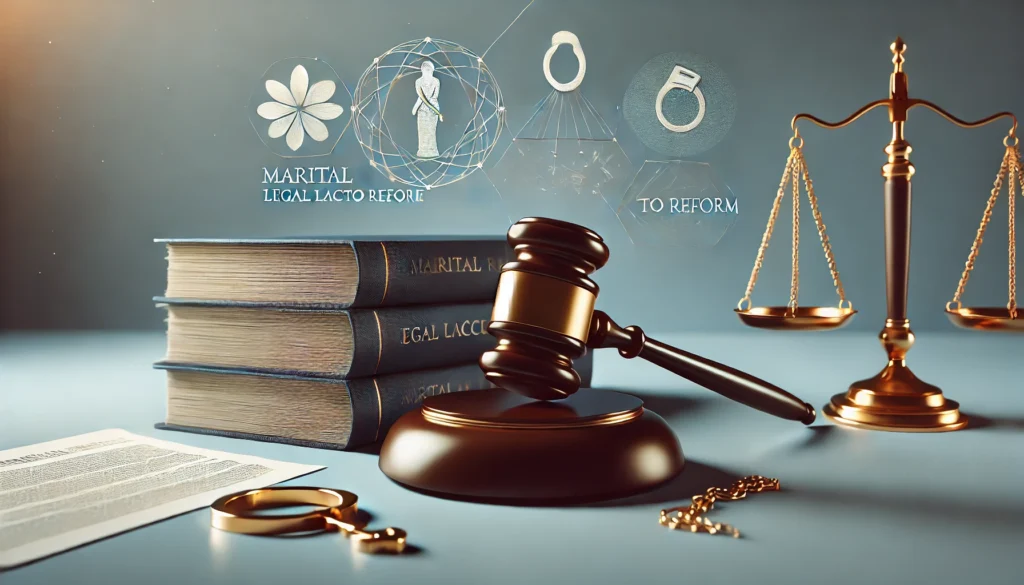Published On: 27th August, 2024
Authored By: Ojaswita Swami
BABU BANARASI DAS UNIVERSITY
ABSTRACT
Dr. Bhimrao Ambedkar, the chairman of the drafting committee of the Indian Constitution, described Article 32 of the Constitution of India as “the soul of the Constitution and the very heart of it.” The following legal article involves a study of the Constitutional Remedies which has been provided to the citizens for safeguarding the fundamental rights conferred to the citizens by the Indian Constitution. Part III of the Constitution of India lays down the six fundamental rights which range from Article 12 to 35 which are universally applicable to the citizens of Indian territory. In cases of violation of such essential and basic rights of the individuals, the Constitution has guaranteed the revival of such infringed rights in the form of various types of formal written orders known as writs which act as a remedy for the violation of the fundamental rights. This article further delves into the study of the various types of writs that are available to the citizens and thus act as an essential and efficient source of remedy.
INTRODUCTION
The concept of Constitutional Remedies refers to the aid that is provided by the judicial system of India. The citizens of the country have the fundamental right to constitutional remedies wherein they can move the Supreme Court of India to claim appropriate relief against unconstitutional infringement. This right gives people the ability to file complaints when their rights are violated, which is essential for defending freedoms in a democracy. Article 32 has empowered the Supreme Court to execute any of the rights bestowed upon the citizens by the Constitution in the form of a writ jurisdiction wherein it issues orders or directives for the restoration of the violated rights.
ARTICLE 32 OF THE CONSTITUTION OF INDIA, 1950
Article 32, being the heart and soul of the Indian Constitution, is a fundamental right that has been enshrined in Part III of the Constitution of India, 1950. This article empowers the Supreme Court of India, the Apex Court, to enforce the fundamental rights guaranteed under Part III of the Indian Constitution. It provides the Supreme Court with an original jurisdiction whereby the citizens can claim a quick remedy by directly approaching the Apex Court for their infringed rights. Thus, this Article is also known as the ‘Right to Constitutional Remedies’.
Article 32(1) states that the citizens have “The right to move the Supreme Court by appropriate proceedings for the enforcement of the rights conferred by this Part is guaranteed.”[1]
Article 32(2) states that “The Supreme Court shall have the power to issue directions or orders or writs including writs in the nature of habeas corpus, mandamus, prohibition, quo warranto, certiorari, whichever may be appropriate, for the enforcement of any of the rights conferred by this Part.”[2]
CONSTITUTIONAL REMEDIES – MEANING
As the Constitution of a country provides for certain rights and freedoms to the citizens, it also provides certain legal mechanisms which help in safeguarding and enforcing these constitutional rights of the individuals in case of its infringement. The judiciary provides for enforcement of the infringed rights and thus acts as a remedy, as provided by the Constitution, for the citizens. These remedies can be used by the citizens by approaching the courts. This ensures a liberal and protected life for the individuals. These remedies are provided to the citizens in the form of writs and are thus known as constitutional remedies.
WRITS – MEANING
The writs have been in existence in Great Britain for several years and have thus originated from the English judicial system[3]. The term ‘writ’ is the translation of the Latin word ‘breve’ which means ‘letter’ and the German word ‘brief’[4].
‘Writ’ is a formal written command or order issued by a court, directing the person to whom it is addressed to do or refrain from doing some act specified herein. Thus, a writ is a written document or letter under the seal of the court issued to a person or authority commanding them to commit or omit an action.
TYPES OF WRITS
The Indian Constitution provides for five types of writs namely, habeas corpus, mandamus, prohibition, quo warranto, and certiorari.
-
HABEAS CORPUS
Habeas Corpus is a Latin term that literally means ‘to have a body’.[5] Habeas Corpus, in the context of India, may be defined as a statutory remedy by which the judges of the superior courts are empowered to direct the production of an imprisoned individual before a Court of Justice to obtain knowledge of the reason why he has been detained and to set him free if there is no legally valid justification for such detention or imprisonment.
-
The objective of the Writ
It serves to preserve an individual’s freedom from arbitrary governmental action that infringes upon their fundamental rights as guaranteed by Articles 19, 21, and 22 of the Constitution, as well as to protect them from harm caused by the administrative system[6]. The objective of this writ is to secure the release of the person detained illegally. Its object is not to punish the person who has wrongfully detained another person but to secure the release of the person so detained wrongfully.
-
When is it Issued?
The writ of habeas corpus is issued in the form of an order calling upon a person, by whom another person is detained, to bring that person before the Court to let the Court know by what authority and reason, he has detained that person.
The people acquire the help of this writ by making an application of it in the form of an affidavit. The application is made by the detainee himself, or it can also be made by any person on behalf of the prisoner, i.e. a friend or a family member, by giving reasons as to why the person who has been imprisoned could not make the affidavit himself.
- The different purposes for which the writ of habeas corpus is issued
- If the Executive has arrested and detained any person without the authority of any law, the High Court or the Supreme Court may issue a writ of habeas corpus against the authority that has kept the person in custody.[7]
- Where the order of imprisonment or detention is ultra vires the statute which authorizes the detention.
- If the power of detention vested in authority was exercised with a mala fide
2. MANDAMUS
Mandamus literally means ‘a command’ or ‘the order’ in Latin[8]. Mandamus is a command, or an order issued by the court to direct any person, corporation, inferior court, tribunal, Government, or any other authority to do some act therein specified which appertains to his or their office and is in the nature of public duty. This writ is granted for the proper execution of exclusively ministerial and required functions. This writ, however, cannot be used against the Governor or the President. Its primary goal is to guarantee that the executive and administrative branches do not abuse their authority and that their responsibilities are carried out correctly. Additionally, it protects the general public against administrative organizations abusing their power[9]. Any person, who has the legal right to compel the performance of the public duty and is affected by the violation of the statutory duty, may apply for the issue of the writ of mandamus. In the case of Sharif Ahmad v. H.T.A. Meerut[10], the respondent did not oblige to the orders of the tribunal. The petitioner approached the Supreme Court for the enforcement of the orders of the tribunal. The Court issued the writ of Mandamus ordering the Respondent to obey the orders of the tribunal[11].
- Essentials for the issue of the writ
- The person who is making an application for the writ of mandamus must have the legal right to compel the performance of the public duty.
- The duty must be public in nature.
- There must be a failure on the part of the person or authority in the performance of his duties.
- Rather than being optional, the public obligation must be essential or mandatory in nature.
- Purpose of Mandamus
- For the enforcement of fundamental rights.
- To direct a public official or the Government not to enforce a law that is unconstitutional.
- To force a court or judicial tribunal that has declined to use its jurisdiction to comply.
- To compel any person to perform his public duty where the duty is imposed by the Constitution or statutory instrument.
3. PROHIBITION
The literal meaning of the term ‘prohibition’ is – ‘to forbid’ or ‘to prohibit’[12]. The writ of prohibition is based upon the principle “prevention is better than cure”. It is a judicial writ issued from a superior court to an inferior court, tribunal, or administrative authorities having a duty imposed on them to proceed judicially, to prevent those from continuing their proceedings while abusing their jurisdiction. The person being sued can petition the Supreme Court for a writ of prohibition when an inferior court takes up a case over which it lacks jurisdiction. If successful, an order prohibiting the inferior court from carrying out the case will be issued. The writ of prohibition prevents unlawful, irregular, improper, and erroneous exercise of jurisdiction and keeps the inferior courts within their limits and jurisdiction. In the case of Calcutta Discount Co. Ltd. v. ITO[13], the Supreme Court held that when a subordinate court or tribunal is shown decisively that they have acted in excess of its jurisdiction, the court will issue a writ of prohibition regardless of whether there exists an alternative remedy or not[14].
- When is it Issued?
- When the inferior court exceeds or acts without its jurisdiction.
- Where the principles of natural justice are violated.
- Where fundamental rights are violated.
4. QUO WARRANTO
Quo Warranto literally means ‘by what authority?’.[15] It is one of the prerogative writs issued by a superior court against a person who claims any office to enquire by what authority he supports his claim. Such a person is required to show by what authority he is entitled to hold that office. The question of his authority can be made on the ground such as he does not fulfill the required qualifications to hold such an office. In the case of University of the f Mysore v. Govind Rao[16], it was held that to issue quo warranto the office is required to be an office of public character and substantive character. It cannot be issued if the office in question is an office of private character.
The Court may issue quo warranto at the instance of any member of the public who has acted bona fide whether any of his personal legal rights have been violated or not.
- Conditions for the issue of Quo Warranto
- The office must be public in nature, and it must be created by a statute or by the Constitution itself.
- The office must be a substantive one and must be independent in title.
- The public office must be held illegally and not merely irregularly.
5. CERTIORARI
The Latin term ‘certiorari’ literally means ‘to be certified’[17]. This type of writ is issued by a superior court to an inferior court to “call up the records of a cause therein depending, that conscionable justice may be therein administered.”[18] Whenever anybody or person having legal authority to determine questions affecting the rights of a subject having the duty to act judicially and acts in excess of their legal authority, the writ of certiorari may lie to quash a decision that goes beyond jurisdiction[19]. When any order already passed by a lower court or tribunal if the superior court thinks that the lower court acted beyond its jurisdiction missed out on any important facts relating to the case or made some error in deciding a particular case, the court can quash or transfer the case to itself issuing this writ. This writ is only available when the order of the lower court or tribunal is already passed.[20]
- Objects of the writ
- To keep the inferior courts or tribunals or bodies exercising judicial functions within the limits of the jurisdiction assigned to them by law and to prevent them from acting in excess of their jurisdiction.
- To protect the fundamental rights conferred to the citizens under Part III of the Constitution of India.
- To ensure that the inferior courts or authority should exercise its powers properly, effectively, and efficiently.
- Conditions for the issue of Certiorari
- A tribunal or person with the legal authority to decide matters pertaining to subjects’ rights and the responsibility to act judicially should exist.
- Such a tribunal or officer must have acted in excess of or without the jurisdiction or has failed to exercise its jurisdiction.
- Where the inferior court or quasi-authority acted against the principles of natural justice.
- Where there is an ‘error of law apparent on the face of the record’. This means that if any tribunal or inferior court has made a mistake in passing a judgment that has led to injustice against an innocent person then the superior court quashes the judgment of the lower court and passes an appropriate judgment for providing justice.
CONCLUSION
Article 32 has provided incredible powers to the Supreme Court for prompt and efficient action against the infringement of the fundamental rights of the citizens and is thus the ‘protector and guarantor’ of the Indian Constitution. Being the apex body of the judicial system, it is one of the crucial means to seek justice for the basic rights that are essential for the basic sustenance of the life of a citizen. Article 32 is basically a practical applicability of the theoretical nature of the fundamental rights guaranteed under Part III of the Indian Constitution. It is one such article that cannot be suspended even during the imposition of a national emergency in the territory of India. This highlights the huge significance of this right. Thus, it is rightfully said, “Article 32 is the cornerstone of the entire edifice set up by the Constitution.”
Reference(s):
[1] INDIA CONST. art. 32, cl. 1.
[2] INDIA CONST. art. 32, cl. 2.
[3] DR. S. R. MYNENI, CONSTITUTIONAL LAW-1 552 (4 ed. 2022).
[4] DR. S. R. MYNENI, CONSTITUTIONAL LAW-1 552 (4 ed. 2022).
[5] DR. S. R. MYNENI, CONSTITUTIONAL LAW-1 554 (4 ed. 2022).
[6] Alankrita Singh, Article 32 of the Indian Constitution, IPLEADERS (Oct. 12, 2022), https://blog.ipleaders.in/article-32-constitution-india/.
[7] DR. S. R. MYNENI, CONSTITUTIONAL LAW-1 556 (4 ed. 2022).
[8] Alankrita Singh, Article 32 of the Indian Constitution, IPLEADERS (Oct. 12, 2022), https://blog.ipleaders.in/article-32-constitution-india/.
[9] Alankrita Singh, Article 32 of the Indian Constitution, IPLEADERS (Oct. 12, 2022), https://blog.ipleaders.in/article-32-constitution-india/.
[10] Sharif Ahmad v H.T.A. Meerut, AIR 1978 SC 209 (India).
[11] DR. S. R. MYNENI, CONSTITUTIONAL LAW-1 561 (4 ed. 2022).
[12] Next IAS Content Team, Right to Constitutional Remedies (Article 32): Meaning Provisions Significance, NEXT IAS (Feb. 19, 2024), https://www.nextias.com/blog/right-to-constitutional-remedies/#Meaning_of_Constitutional_Remedies.
[13] Calcutta Discount Co. Ltd v ITO, AIR 1961 SC 372 (India).
[14] Souvik Roy Choudhury, Article 32 of Indian Constitution [Right To Constitutional Remedies], LAW CORNER (Dec. 9, 2020), https://lawcorner.in/article-32-of-indian-constitution-right-to-constitutional-remedies/#CONCLUSION.
[15] DR. S. R. MYNENI, CONSTITUTIONAL LAW-1 570 (4 ed. 2022).
[16] The University of Mysore v Govind Rao, AIR 1965 SC 491 (India).
[17] Next IAS Content Team, Right to Constitutional Remedies (Article 32): Meaning Provisions Significance, NEXT IAS (Feb. 19, 2024), https://www.nextias.com/blog/right-to-constitutional-remedies/#Meaning_of_Constitutional_Remedies.
[18] DR. S. R. MYNENI, CONSTITUTIONAL LAW-1 562-63 (4 ed. 2022).
[19] DR. S. R. MYNENI, CONSTITUTIONAL LAW-1 563 (4 ed. 2022).
[20] Souvik Roy Choudhury, Article 32 of Indian Constitution [Right To Constitutional Remedies], LAW CORNER (Dec. 9, 2020), https://lawcorner.in/article-32-of-indian-constitution-right-to-constitutional-remedies/#CONCLUSION.



